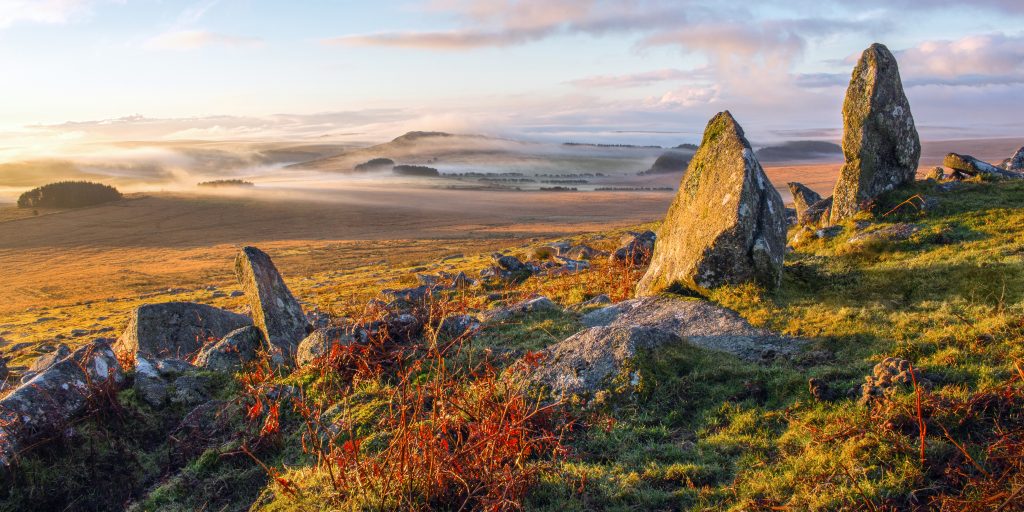
Cornish myths and legends.
Storytelling is an intrinsic part of Cornish culture, and as the counties deep pagan and Celtic traditions have woven their way through time, so have these tales of mermaids and giants. Some of these legends are echoed in Wales, Ireland and Brittany, albeit in different languages, as Celtic mythology flourished, and stories were shared between tribes. Whether these legends are based in reality or just a wee tale to keep the kids in line, we will let you decide, but there is no denying that Cornwall on a misty night is the perfect place for a ghost story or two…..
Beast of Bodmin Moor
A modern myth, sightings of big cats on the moor have become a regular occurrence in the last few decades, so much so that the government ordered an official investigation into the existence of the beast in 1995. Whilst no evidence was found to rule out (or in!) the possibility of panther-style beasts roaming the moors, there is no denying that this is a tale that has spawned many a late-night campfire story.
Piskies
These mischievous little creatures inhabit stone circles, barrows and ancient woodlands and are said to be fun-loving and cheeky with a tinkling laugh. Legend has it that over 600 piskies gathered on Trevose Head and were singing and dancing in a circle, when one, Omfra, lost his laugh. He searched everywhere, and it was eventually returned by King Arthur in the form of a Chough, whilst Omfra was wading through Dozemary Pool.
The Mermaid of Zennor
The mermaid in this tale was so entranced by the singing coming from the local church that she would attend services and sing along in a beautifully sweet voice. This attracted the attention of a local chap, Mathey Trewella, who eventually fell for her charms and one day followed her from the church, never to be seen again. Zennor church has a beautiful carved pew depicting the mermaid, said to be where she sat and sang.
Knockers
These little creatures inhabit the mines and were said to knock on the walls to warn miners of impending collapses. Some believe that they are the spirits of those who have died in the mines and are hanging around to help those still at work. However, some tales state that they were actually a bit more malevolent and would knock on the walls in an attempt to lead the miners to their death. I think I like to believe the former story, rather than the latter!
Jack the Giant Killer
A tale of epic proportions, Jack was the son of a farmer who went on to slay several famous giants using a mixture of strength and cunning. His first kill was Corcoran, the giant who created St Michaels Mount, who he lured to death in a pit trap. For this deed he was awarded not only the giant’s wealth, but a sword and a belt, but this action led the man-eating giant Blunderbore to swear vengeance for Corcorans death. Jack makes quick work of not only Blunderbore, but also his brother Rebecks, and frees three maidens from the giant’s clutches. Not content with his spree, Jack heads off to Wales and then further afield, where he continues his mission to lay waste to every giant that crosses his path. After an awful lot of slaughtering of magical beasts, Jack marries a Dukes daughter at the court of King Arthur and they all live happily ever after.
The Bucca
A male sea spirit that presents as a merman that inhabits Cornwall’s caves and inlets, the Bucca has long been associated with the sea and coast. The Bucca has two forms, Bucca Widn and Bucca Dhu, as well as the bucca-boo, a bogeyman type who was long used as a threat to ensure Cornwall’s children were on their best behaviour. The fishermen of Penzance, Mousehole and Newlyn would leave offerings from their catch on the beaches to appease the Bucca, in order to receive favourable treatment whilst at sea.
Lyonesse
A sunken kingdom that stretched between Land’s End and the Isles of Scilly, Lyonesse was said to have been a beautiful land, with fertile pastures and pretty villages. Swallowed by the ocean in one night after the inhabitants committed a crime so awful that it angered God, legend says that you can still hear the bells of the churches ringing across the seas on a calm day. The lone survivor of the waters had been out hunting and fallen asleep under a tree: he was able to outride the tide on his white horse, escaped to higher ground. Several major Cornish families claim to be the descendants of Trevelyan, and display horseshoes on their familial crest as a nod to their lineage.
Jan Tregeagle
The legend of Jan Tregeagle paints a grim picture of a terrible man who murdered his wife and son, and when summoned as a witness in his trial after his death, appeared in ghostly form in the witness box and begged to not be returned to hell. A local clergy man intervened, and the ghost of Jan was instead set impossible tasks, including emptying Dozemary Pool using nothing but a limpet shell with a hole in it. The legend says that you can still hear his mad howling over the moor to this day, as he continues his impossible task of draining the pool.
Mermaid of Padstow
Whilst several incarnations of this tale exist, this local favourite has left an indelible mark on the Padstow landscape to his day. A local farmer fell in love with a mermaid, and when she denied his advances, he shot her. With her last dying breath she cursed the waters, and whipped up a mighty storm that wrecked all the boats and left them broken on a large spit of sand at the mouth of the estuary. This is the legend of how The Doom Bar came to be, and it is the cause of peril to all who use these waters to this day.
Mother Ivey
Mother Ivey was a 16th century healer and white witch who was well loved in the community of St Merryn. When a boatload of salted pilchards was sent back from Spain, instead of giving it to the local villagers to eat, the wealthy landowner ordered his son to plough them into a field. This enraged Mother Ivey, who put a curse on the land and the family, saying that “if ever the soil was broken, death would follow”. Several unexplained incidents later, the legend has become well and truly rooted in local lore, so much so that when Southwest Water had to lay some pipes on the land in 1997, they had a priest visit the field to lift the curse before any soil was moved.
